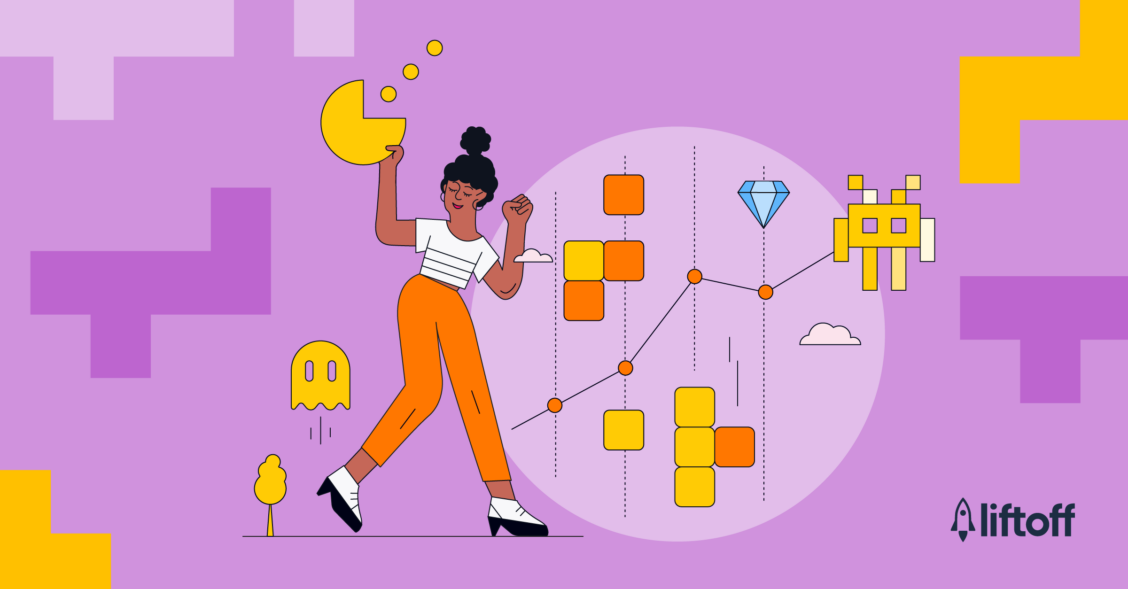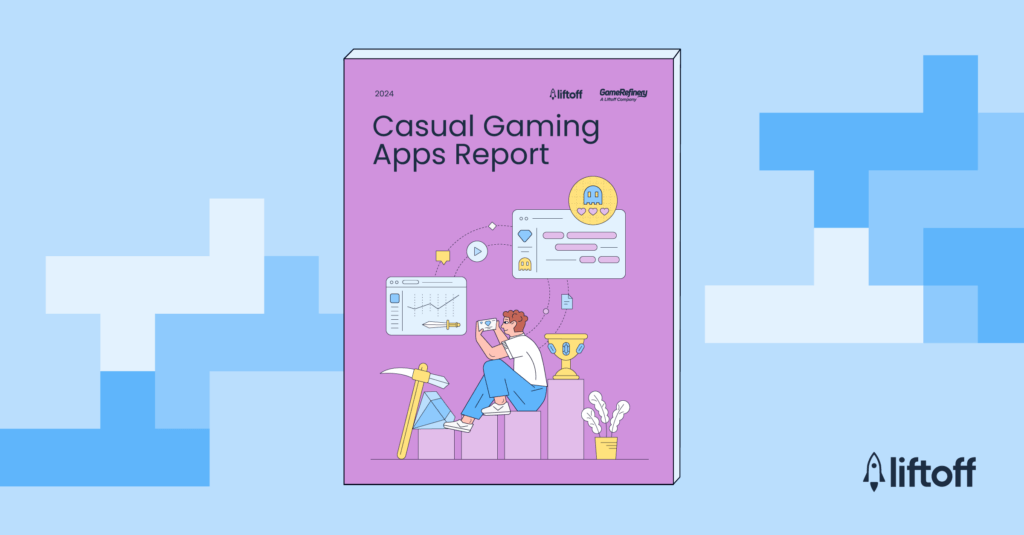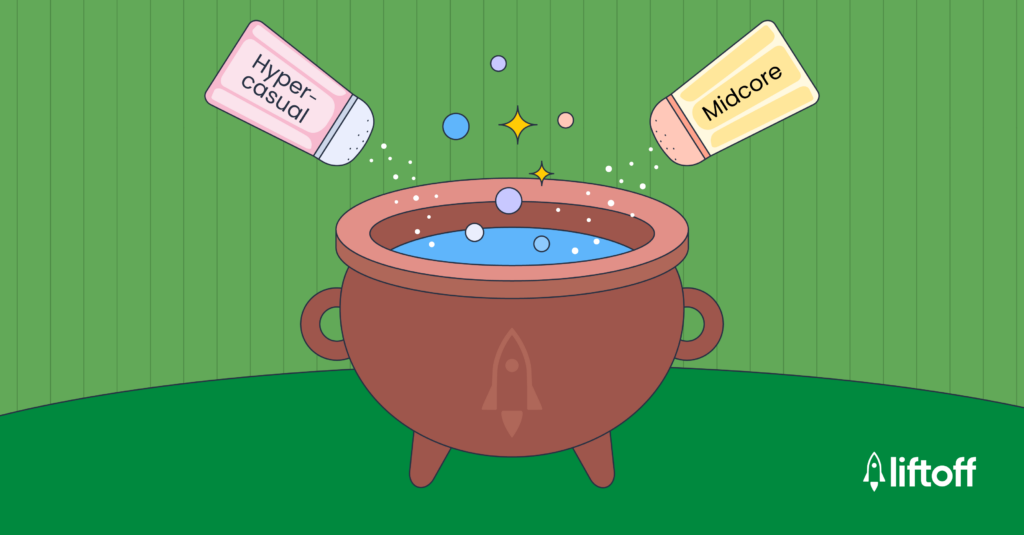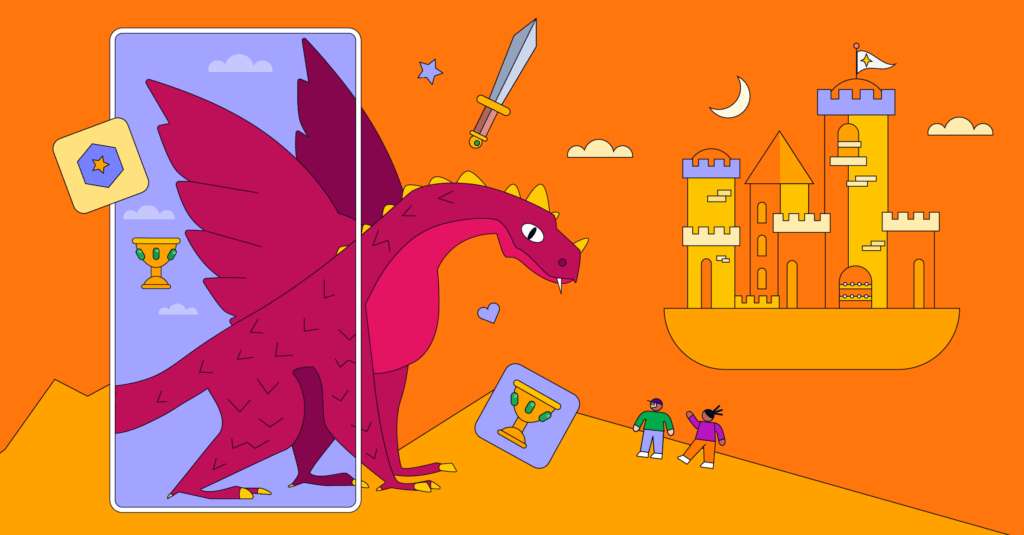
The Casual Gaming Insights Mobile Marketers Need to Know in 2024
The mobile gaming landscape has shifted dramatically since the pandemic boom, with an enhanced focus on user privacy and rising costs posing formidable challenges for mobile marketers and developers alike. As a result, casual gaming apps have had to evolve rapidly to meet the market’s shifting demands, launching new subgenres, gameplay mechanics, and monetization strategies to drive revenue and engagement.
The Liftoff 2024 Casual Gaming Apps Report, created with insights from GameRefinery and Liftoff ML-powered Accelerate, explores what’s changed in the casual gaming market over the last 12 months. It includes everything from the must-know trends and user acquisition tactics to a full rundown of user acquisition costs.
Don’t worry. We know your time is of the essence, so we’ve gathered the key facts from the report that app and mobile game marketers need to know.
Android is significantly cheaper for UA in casual gaming apps
Are you looking to drive down marketing costs? Based on the data we’ve gathered, we can’t imagine you’ll be the only one. Our 2023 Casual Gaming Apps Report found that acquisition costs were steady at $0.98. This year’s report has a very different outlook, with acquisition costs doubling to $2.17 per install.
Much of this expense stems from iOS, where mobile marketers still contend with the challenges arising from Apple’s enhanced focus on user privacy. The average cost per install (CPI) for casual games on iOS between March 2023 and March 2024 was $4.83 per install, an increase of $2.50 compared to the same period a year prior.
However, there is some good news. It’s business as usual on Android, costing just $0.65 per install (around eight times less than iOS). But before you rush towards all things Google, just remember that iOS games enjoy a slightly higher average D7 ROAS at 5.9% (an 0.8% increase over Android).
iOS acquisition costs increase between April and June
Acquisition costs on iOS are not only significantly higher than on Android, but they’re also more variable. Between March and May 2023, iOS acquisition costs spiked considerably, with April being the most expensive month of the year at $5.35 per install. Comparatively, prices fell in the latter half of the year, dropping as low as $4.20 per install in December.
On Android, costs held pretty steady throughout the year, although there was a slight bump in the latter half of the year, peaking at $0.81 per install in October and December. It’s worth noting that the opposite applies to D7 ROAS, with iOS hovering around 5.5% to 6% for most of last year, while Android saw much more fluctuation, peaking at 6.1% in July but falling as low as 4.2% in October.
These variations could be related to different promotions and events, especially given the vast number of mobile games incorporating seasonal content into their LiveOps strategies. Regardless of the cause, mobile marketers should consider building bespoke campaigns for each platform to make the most of cheaper periods and plan their UA campaigns well before the holiday period to get a headstart.
LATAM continues to exhibit the lowest CPI
One of the best ways to succeed in the crowded casual gaming market is to target the most economical regions. North America (NAMAR) might be popular, but it had the highest CPI last year at $6.78. In comparison, Europe, the Middle East, and Africa (EMEA), and Asia-Pacific (APAC) came in at around $1 per install, almost six times lower. Latin America (LATAM) came in even cheaper at just $0.44 per install.
However, there is one caveat. The regions with the lowest CPI offer the most negligible ROI. Looking at D7 ROAS, LATAM came in at 4.6%, while NAMER was notably higher at 6%. Arguably, EMEA and APAC offer the best middle ground, with a D7 ROAS of 5.3% alongside relatively low install costs.
Simulation players are the cheapest to acquire
The casual gaming market comprises various genres and subgenres, notably puzzle, arcade, lifestyle, AR/location, and hyper-casual. Some of these genres are much more popular than others, meaning that you’re likely to encounter drastically different costs depending on which you target.
Puzzle, lifestyle, and simulation are the three casual genres that drive the most perennial interest. Simulation games offer the lowest user acquisition costs at $1.77 per install, while lifestyle is almost double the price at $2.95. Puzzle is the largest segment of the casual market and averages around $2.23 CPI, offering a good balance between scalability and value.
Casual games drive installs across the board
Casual games continue to be the biggest driver of installs in other casual games at 91%. If we break this down further into specific casual genres, puzzle games take the top spot at 37%. In second place are hybrid-casual games, which are responsible for driving 29% of casual game installs. Finally, lifestyle and casual games take third place, driving 8% of installs.
A more surprising trend is that casual games are also the powerhouse behind midcore game installs, with our sample showing that a staggering 74% of new midcore players discovered their games through ads within casual titles last year. Comparatively, other midcore titles drove just 10% of installs, while sports & driving brought in 13%.
Rising casual mobile game genres
Given the level of competition in the mobile market, it can take time for new titles to break through. All the more impressive, then, that these three dynamic new genres have recently managed to make their mark on the casual market:
- 3D Match: Triple Match 3D founded the 3D match genre in 2022, and it’s since exploded in popularity. Based on GameRefinery data, market share for 3D match games in the US iOS top 500 grossing grew from $2.95M to $15.25M between Q4 2022 and Q4 2023.
- Mahjong Solitaire, a popular puzzle game in China that uses tiles rather than playing cards, has gained much traction on mobile. This gameplay motif began with Zen Match, released in 2021, but it’s been followed up more recently by Tile Busters and Tile Family—both of which entered the US top 200 grossing last year.
- Hybrid-casual games are surging in popularity, with several titles breaking into the top-grossing charts. These games combine elements of midcore and casual games to create the ultimate blend of accessibility and long-lasting engagement. The added gameplay complexity also unlocks a broader range of monetization opportunities.
Emerging trends in casual gaming events
Live events are one of the biggest drivers of engagement among casual games, with exciting new content, items, and deals keeping players returning for more week after week. It’s hardly surprising that developers always look for new event types to retain players’ attention. Here are three that stood out to GameRefinery:
- Minigames (small side games that differ from an app’s usual gameplay mechanics) have become a staple in the LiveOps strategy of most casual games. One of the most popular minigames is the Digging Event, where players use tokens to dig through a grid to reveal hidden items and minor rewards. Minigame implementation is a great response to UA and player retention in a post-IDFA world.
- Social win streak events pit 100 players against each other in a race to clear levels without losing. Players are gradually eliminated from the event as levels are cleared, with only a talented few making it to the end to share a pool of rewards.
- Partner events were pioneered by Monopoly GO! and have appeared in many titles since. These events involve teaming up with friends or random players to complete tasks for shared rewards.
Casual gaming monetization trends
In addition to trying to innovate through new event types, mobile game studios are constantly experimenting with new monetization methods and IAP offers. Over the past year, three tactics in particular have picked up a lot of steam across the casual gaming market:
- Pick-one bundles offer players a choice. They’re offered a selection of different bundles to choose from but are restricted to just one purchase. The catch is that there’s usually a bonus option to pick up all the bundles at once for a special discounted rate for an extra enticing saving.
- Progressive offers present players with a string of deals that alternate between free-to-claim rewards and real-money purchases. Users can only claim the offers one after the other in their order of appearance. Out of the US top 25 casual games, approximately 70% have some form of progressive offer.
- Engagement offers are a new, dynamic IAP format that rewards players for completing specific in-game tasks. Rewards include access to special offers, increased discounts, premium rewards, and additional content added to purchases.
Web stores spread to the casual games market
Over the past couple of years, many mobile apps have launched dedicated external stores on their websites. While they require a bit more effort to access on the user’s part, these external stores offer exclusive bundles and discounts that you can’t get directly within the app. The benefit to developers is that, because these stores aren’t within the confines of iOS or Google Play, they circumvent any platform holder fees.
Previously, it was mainly midcore mobile games that featured external web stores. Still, we’ve encountered several casual games jumping on the trend, such as Scopely’s YAHTZEE With Buddies and Mattel’s mobile card games.


